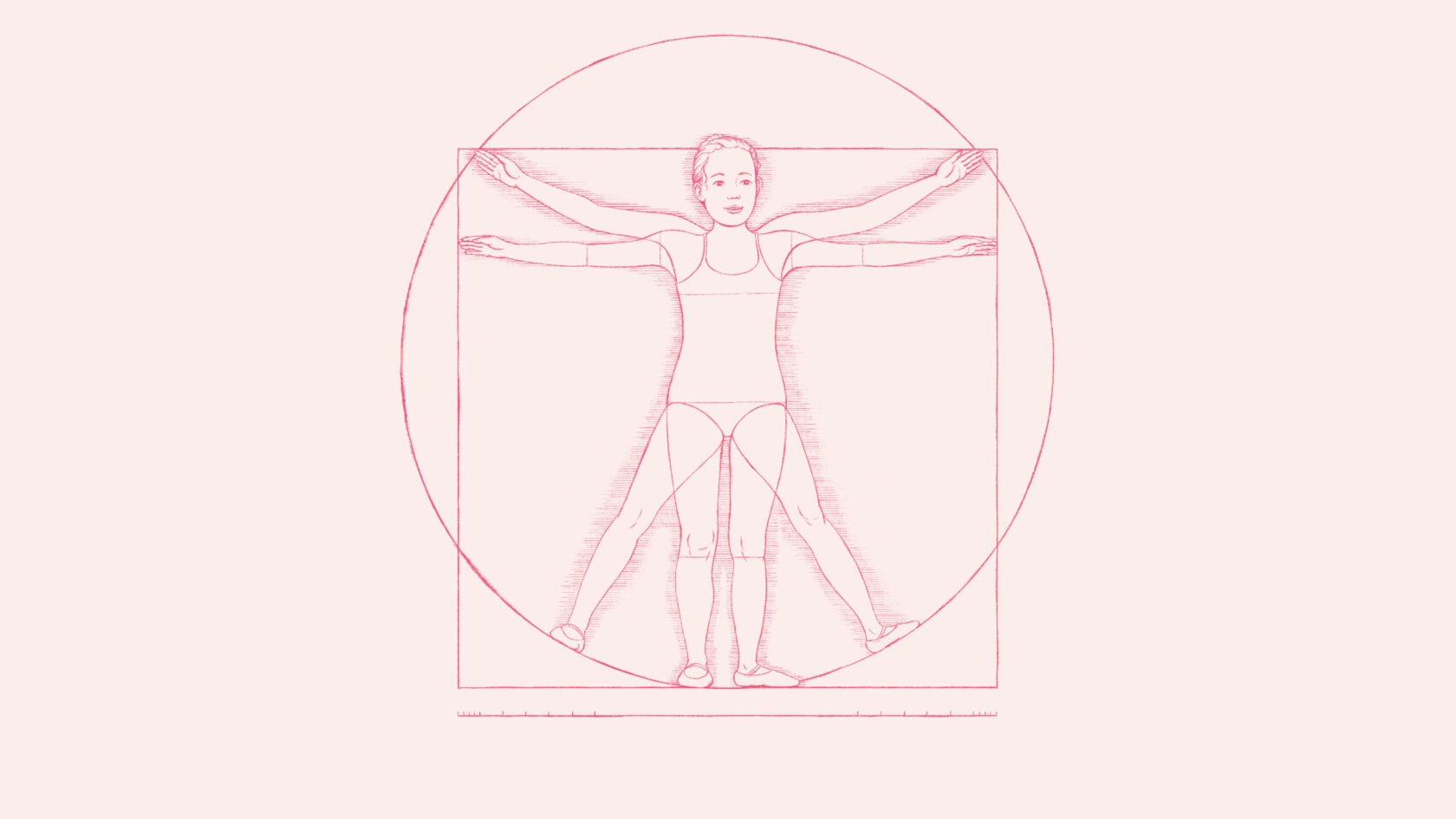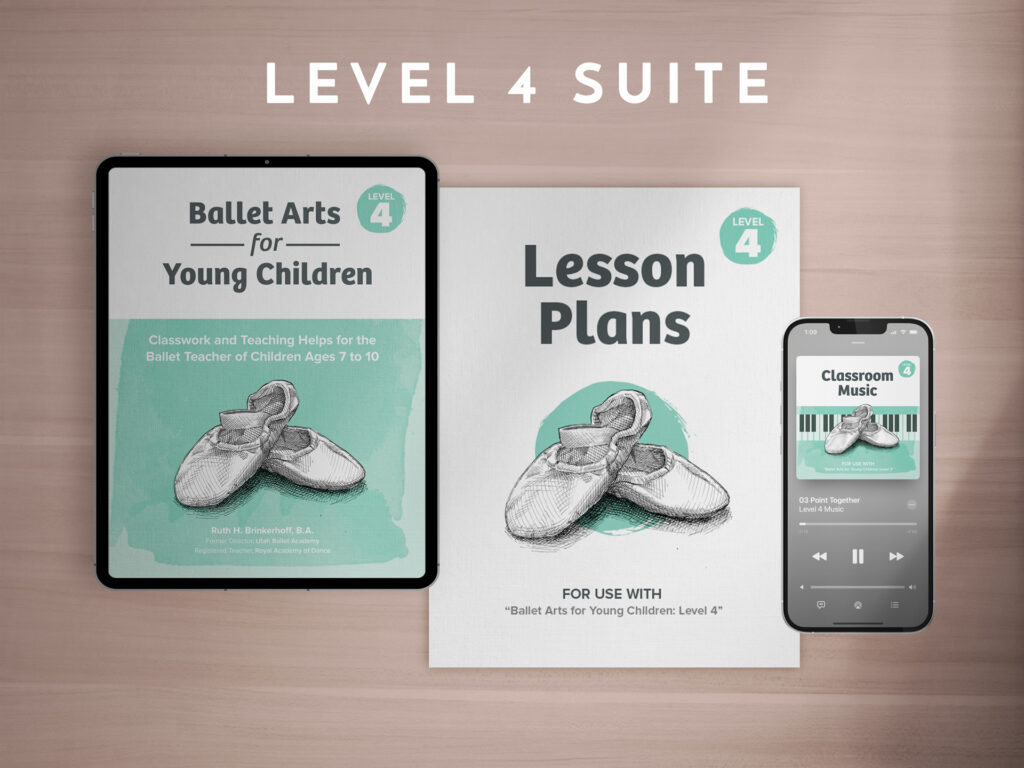The little bodies of children between the ages of 7 and 10 are going through a lot of physical changes. As teachers, we need to understand and respect the body’s need for certain parameters when it comes to teaching ballet technique. We obviously should not expect an 8 year old to do anything and everything a 15 year old can do!
This article, drawn from the Level 4 Curriculum Book, addresses the bones, ligaments, central nervous system, turnout and other physical expectations for the ballet student of 7-10 years old. What can we really expect during this phase?
Bones
At birth, the skeleton is largely cartilage, not true bone. This means that all during the growing years, until about age twenty, the bones are still in the process of hardening, and some parts of them are soft, and can be pushed out of their intended shapes. The plate of cartilage, referred to as the growth plate, located between the shaft and the epiphyses does not become bone until about age twenty.
At about age seven or eight the pelvis finally develops its true shape and functionality. At about the same time, the lumbar vertebrae lengthen. The development of these two structures gives more room in the abdomen for the viscera, and some beginning posture training can be given. At this time, the shoulder girdle and rib cage form their adult relationship and the child is finally able to use the adult methods of respiration and arm movement, which are so important to ballet.
Central Nervous System
Children vary some in their motor control and neurological development, but most come fairly close to the general stages that are expected at their chronological ages.
Motor control development is believed to be encouraged by a child’s attempts to master and perfect basic movements. Children in a well-taught dance class seem to acquire coordination earlier (See “3 Stages of Coordination”), with a more refined control over their immature muscles. Once the basic movements are controlled and smooth, technical skills can be successfully learned.
Ligaments
Ligaments protect the joint, hold the bones and other components in place, and offer little resistance to normal movement. Ligaments are not elastic like muscles. When ligaments are stretched beyond their intended length, they do not return to their normal length.
This is why young, beginning students must not be “stretched,” especially by putting legs up on a barre, or by another person manipulating their legs, or by trying to do splits or oversplits.
Structures of the body are necessarily somewhat soft during the growing years. When the stretching of muscles is attempted, it is not just the muscles that give. The ligaments and the soft growth plates mentioned earlier are soft, and can be stretched along with the muscles. Stretching too soon, or too forcefully can distort the growth plates within the joints, and overstretch the ligaments which hold the joints together. Also, when students continually overturn their feet, ligaments are also gradually stretched.
Growing joints and muscles must not be forcefully stretched. Any stretching done should not involve mechanical assistance (i.e. barres), and should not involve pain.
It is helpful when dance teachers are aware of the expected growth patterns, and plan classwork that fits the students capabilities and maturity. This increases the comfort, enjoyment, benefit and success of the beginning ballet class.
Turnout
Correct ballet turnout happens in the hip joint. No outward rotation for ballet should take place at the knee or ankle joints. The muscular control required for correct turnout is usually acquired at about age eight, but is not under the child’s full control until ten or twelve.
Most children can use a 90º turnout comfortably by seven. After eight, and one year of good ballet, the turnout can be increased gradually as the muscles strengthen.
After Age Eight
- The pelvis is just now fully shaped, but not as strong as it will be later.
- The knee joints are stronger, but still soft, and growth plates can still be damaged, and the protective ligaments overstretched.
- Abdominal muscles are beginning to work. Exercises such as the “Kitty Kat Stretch” in Level 4 can help encourage these muscles to start firming up.
- Shoulder joints are more mature. The smaller auxiliary joints used in classical port de bras are functional and can begin to learn the technique needed for ballet.
- A balanced strengthening of the muscles without turnout is needed for correct joint formation. In the beginning classes and all classes before teens, occasional work without turnout is valuable. It gives stability to the joints and makes the ballet technique better. A few minutes of this type of dance should be included in every class.
Guidelines for Beginners, Ages 7-9
- Do no splits, and only gentle limbering on the floor without much resistance.
- Take care to see that turnout is actually happening in the hip joints, not in knees or ankles.
- Limit the turnout to 90° for the first year, longer if needed.
- Lift legs only to about 45° the first year.
- Knees should be straightened, but not pushed back. Any needed space between heels should be left in first position, so knees can be brought together without overlapping.
- Do movements of the ankles in both directions, both plantar flexion and dorsiflexion. This strengthens feet and ankles for ballet. The flexing and extending needs to be through the center of the foot, so the muscles learn to hold the foot in line with the knee. (See “Point Your Toes vs. Point Your Foot”)
Pain is a Danger Signal!
Pain is the body’s way of signaling that damage, or potential damage is occurring. If the classwork is suited to the age, experience, and physical condition of the students, they will not feel discomfort. The ballet will flow quite naturally, and progress will happen without stress and strain. Chronic or extreme discomfort should be referred to a doctor or other person with medical expertise.
Understanding the processes your students’ bodies are going through can make a huge difference to how far they will be able to go in their careers. Injury is way too often caused by ballet teachers who have unrealistic expectations for their students and therefore push their growing bodies too far. We have such an important responsibility to take care of our students as they develop at the appropriate pace. Properly guided, a young ballet dancer can and should progress safely and beautifully through their training. All good things take time.
Related Articles:
- Why the Rush?
- How Much Should We Expect?
- Avoiding Injuries with Correct Muscle Use
- Correcting Errors in Muscle Use


Comments
removalist says
Keep on writing, great job!
Dee says
Hi
Add Comment